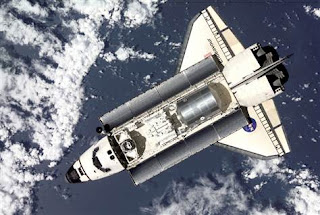Finding out life on other planets has always been a human endeavor. Many missions have been planned and sent to outer space in search of some alien life. However the possibility that microorganisms clinging to the space suit of astronauts who are out on the mission to find aliens cannot be neglected. It may lead to confusion whether the organisms are from earth or other planets. Well it may be a tricky aspect but it has been solved by scientists for astronauts going to mars.

he program of developing foolproof techniques for detection of microbes on space suit is a part of
Austrian Space Forum’s PolAres mission. Austrian scientists are taking use of the
laser-induced-fluorescence emission (L.I.F.E) technique which was also earlier used in detection of microbes in Antarctica. The technique may sound difficult one but it is actually simple. It requires only a LASER pointer and an iPhone. The LASER pointer is directed towards the space suit and if it contains any microbe, it emits a fluorescent glow. The glow is then processed with digital photography and laptops. If the microbe is any known one, it takes only a few seconds. The scientists want to be sure for the samples being brought from Mars to be genuine. The technique is designed for both forward and reverse contamination. While returning to earth, there may be contamination from microbes, if present on mars.
The development of new techniques is not only limited to detection alone. Austrian scientists are also developing techniques to shake away the organisms. The team of scientists led by Gernot Groemer, president of the Austrian Space Forum has designed an electromagnetic method for the same. For that all the astronauts have to do is that to attach the space suit to high voltage electric charge which would make the dust particle and micro organisms to levitate away from the space suit. The dust particles can then be blown away with the help of a stream of air. Earlier, vibration techniques were used for the purpose; however they are not as effective as this one. As per the simulations conducted by scientists, it is found that around 60 to 405 bacteria can cling within minutes of cleaning the suit.
The techniques developed are expected to be the part of The ExoMars rover to be launched in 2018. The current research and studies are conducted in the desert of San Rafael, Utah. The technology developed would increase the credibility of samples from mars. It will be a step ahead in human search for Alien life.





















